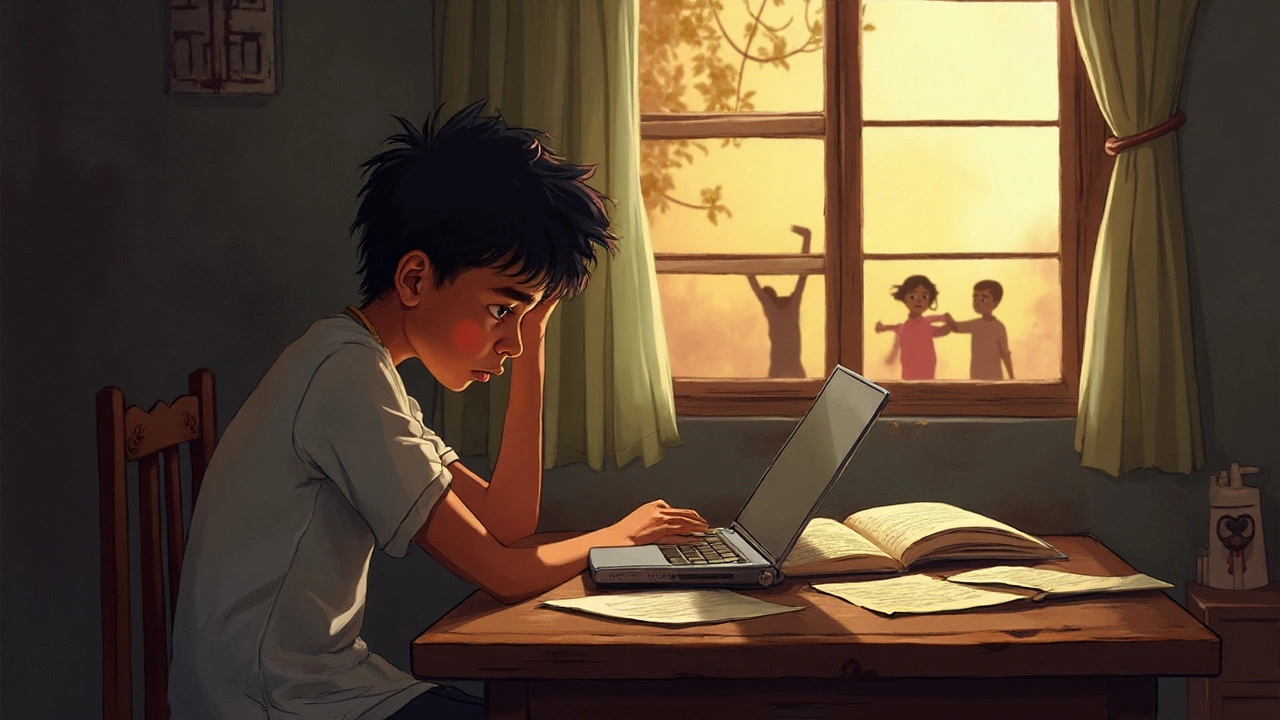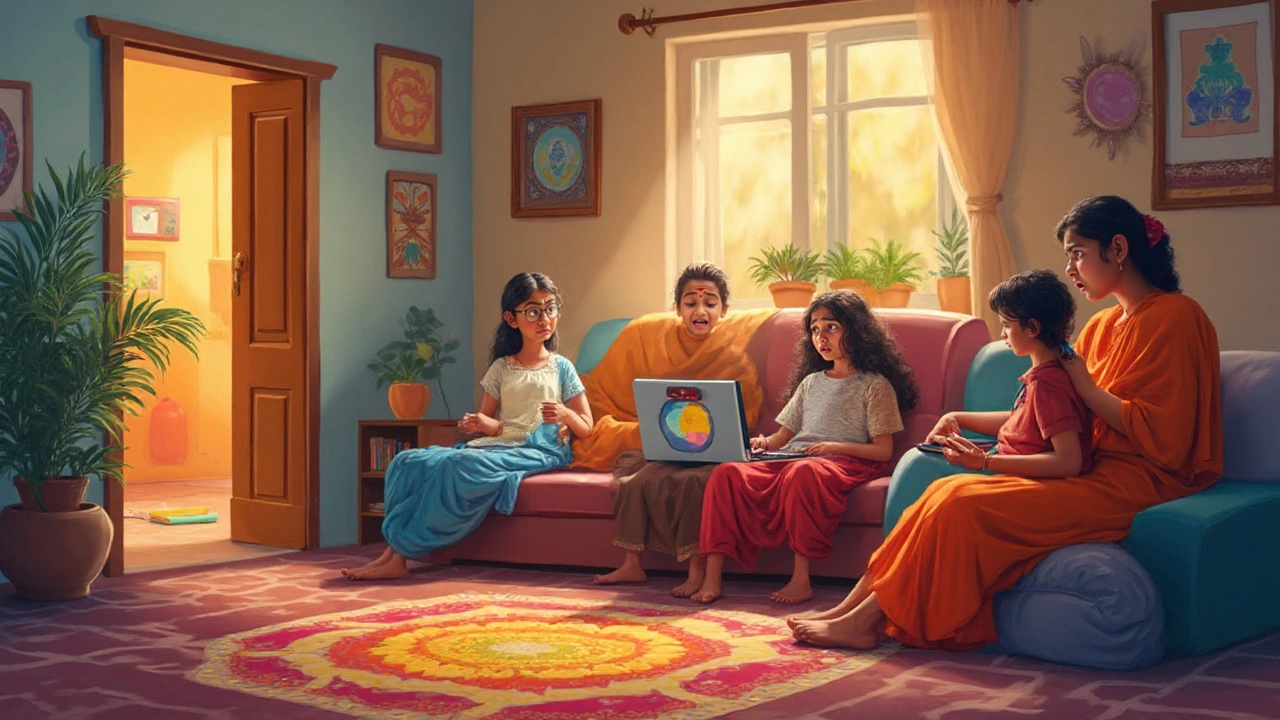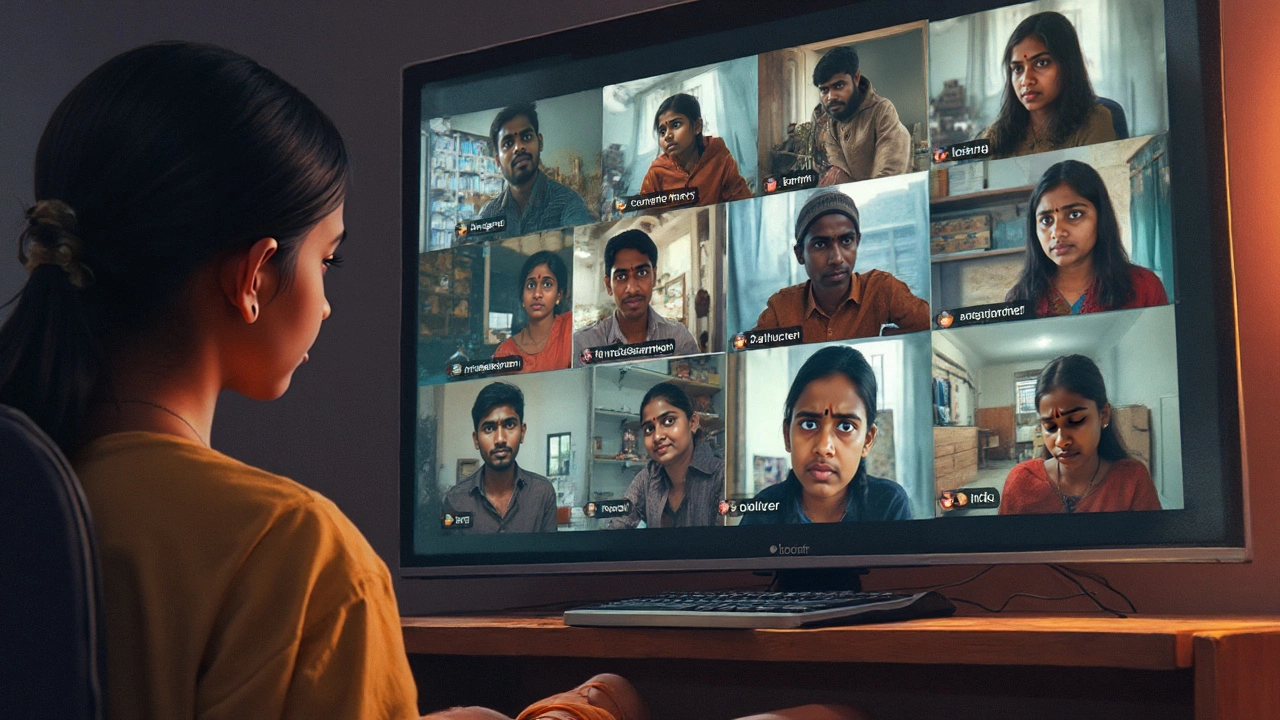Distance Education: Real Disadvantages, Truths, and Surprising Facts
 Aug, 7 2025
Aug, 7 2025
Picture this: you’re curled up in your favorite chair, coffee in hand, laptop on, but something always seems off. The freedom that comes with distance education sounds great until the realities start hitting you. Sure, attending lectures in pajamas feels like a dream. But being honest, plenty of students are starting to question — what do we lose when the classroom moves to Zoom?
Lack of Personal Interaction and Real Connection
Remember how you’d show up in class and immediately catch up with a friend about a tough assignment? Yeah, that’s not easy to replicate on a video call. One of the biggest disadvantages of distance education is the hit to real social interaction. Without face-to-face chats, it’s tough to build strong bonds with classmates or professors. Study published by the American Psychological Association in 2022 actually found that 63% of college students said they felt isolated during their online courses. Feeling lonely isn’t just unpleasant — it messes with focus, motivation, and even grades. When you can’t simply walk over to someone to ask a question, confusion stays longer. Ideas bounce less, conversations dry up, and the sense of belonging slowly fades away.
It gets harder with group projects. Even with Slack channels or WhatsApp groups, it’s not the same as meeting after class. Ever tried coordinating a project when half your team lives in different time zones? That’s a scheduling headache. Conflicts are tougher to resolve, and a shared drive of documents doesn’t make up for the team spirit of a lively classroom debate. The lack of real connection can make collaboration feel forced and uninspiring.
It’s not just friends and peers you lose out on. Professors are less approachable through screens. Asking a quick follow-up, getting tailored feedback, or even understanding a teacher’s mood from their body language — not so easy on Zoom. Missed opportunities for networking are a big deal, especially in fields where who you know matters as much as what you know.
Humans are social animals, and the classroom is a small world where communication goes beyond words. Non-verbal cues, peer encouragement, that clear sense of a learning community — all get watered down online. And if you wonder whether this stuff really matters, just look at the explosion of student mental health issues since remote learning took center stage during the pandemic.
Struggles with Motivation, Discipline, and Time Management
Here’s something nobody tells you before you sign up: self-paced learning is a double-edged sword. The idea sounds awesome. Freedom to choose your own schedule? Who wouldn’t want that? But the catch is, you’ve got to be your own teacher, class monitor, and cheerleader—every single day.
Distractions are everywhere, especially at home. There’s your bed calling, siblings making noise, or a phone buzzing with notifications. According to a 2023 survey by the National Survey on Student Engagement, more than half of online learners admitted to frequently procrastinating or skipping coursework, compared to just over a quarter of classroom learners. Without a strict schedule and constant accountability, motivation drops fast.
No teacher walks by to notice when you’re zoning out or slacking. For some, it’s a recipe for disaster. The line between work time and play time blurs when your classroom is your bedroom. It’s way too easy to mute a screen, open another tab, and suddenly you’re three hours deep in YouTube videos. Small deadlines pile up, assignments slip past, and before you know it, catching up feels impossible. Not everyone has the self-discipline needed for this format, and there’s no shame in admitting it.
It also gets tricky for folks juggling jobs or family responsibilities. Flexibility is the point. But with no set structure, coursework can take the backseat. Students with executive functioning challenges—like ADHD—find this maze even tougher to navigate, and support systems online aren’t always robust or personal enough to help.

Technical Issues and the Digital Divide
Can you really learn well if your internet drops out every hour? Reliable technology isn’t guaranteed for everyone. According to the World Bank, one out of every five students worldwide still lacks regular access to a stable internet connection. Even in countries with widespread wifi, tech snags are unavoidable. Video calls freeze, files vanish, platforms crash, or microphones quit for no reason. A slow laptop can make a two-hour lecture feel eternal.
Students from lower-income backgrounds feel it hardest. Not every home is wired for online learning. Some folks still rely on shared computers or patchy mobile connections, and the frustration mounts fast. Even when devices are working, not everyone is comfortable with the sea of new apps and tools. Logging into online classes, uploading projects, troubleshooting issues—these become daily hurdles. It’s not just about knowing your stuff in math or English; suddenly, you’ve got to be your family IT expert, too.
Then there’s the bigger problem of the learning experience itself. Digital platforms can make you feel like you’re talking at a wall. If you’re a tactile or visual learner, staring at slides or discussion boards might make lessons a chore. You can’t just raise your hand and ask for clarification if your mic isn’t working or you’re frozen out of a call.
| Country | % of Students with High-Speed Internet | % with Personal Computer |
|---|---|---|
| USA | 88% | 76% |
| India | 36% | 41% |
| Brazil | 59% | 51% |
| Nigeria | 25% | 18% |
Looking at these numbers, it’s clear: The playing field is far from level. Being limited by tech is probably not the future anyone signed up for. Even governments and universities are scrambling to bridge the divide—so far, results are pretty mixed. Tips if you’re struggling here? Lean on campus tech support where possible, and don’t be afraid to ask for extended deadlines or flexibility when your gear lets you down.
Doubts About Learning Quality and Academic Integrity
It’s hard to ignore the conversations around quality. Some experts, including a 2023 review by the International Review of Research in Open and Distributed Learning, still argue that online education isn’t on par with traditional classrooms for certain subjects. I mean, how do you practice science lab work from your bedroom? Or master medical techniques by clicking through slides?
Courses that rely on hands-on training, fieldwork, or live discussion just don’t translate neatly. Even in chat-heavy classes, it’s easy for shy students to blend into the wallpaper. Teachers might struggle to spot the quiet ones who need help, or students who try to game the system.
Now, about cheating — yeah, it’s easier to do online, and that’s a real worry for employers and admissions panels. Cheating scandals during online exams made worldwide headlines, and the real kicker is no fancy software catches everything. Some universities have started using proctoring tools, but these raise privacy issues and aren’t foolproof. A lot of students don’t trust online evaluation methods, and some grads feel less confident about what they’ve actually learned when the assessment process is just a ticking countdown on a screen. Want to avoid the trap? Choose programs that blend project work, discussion, and open-book assessments with video check-ins.
Then there’s the problem of recognition. While most employers are coming around, some still see online degrees as "second best." Reputation gaps persist, especially in countries with traditional academic systems. Be mindful when picking a course—always check if the credits will transfer and the diploma is respected in your field.

Accessibility Concerns and Unequal Opportunities
The biggest open secret about distance education? Not everyone can access it. Students with disabilities face all sorts of new obstacles when learning moves online. Screen readers aren’t compatible with every tool, videos might lack captions, and interfaces aren’t always user-friendly for people with visual, hearing, or mobility challenges. According to the National Center for Educational Statistics (NCES), students with disabilities are almost 30% less likely to complete an online course compared to a classroom-based equivalent.
Language can also be a barrier. Many platforms offer limited support for regional languages. International students or those from rural backgrounds may struggle if content is heavily written and delivered in academic English.
Family backgrounds matter a lot in who succeeds online. If you’re a first-generation college student, or your home life is hectic, keeping up can feel almost impossible. Parents can't always help with tough assignments. Sometimes, it’s even a struggle to find a quiet space to concentrate, especially in crowded urban apartments or rural homes. This all creates an unseen gap — students who might have thrived in a regular classroom just fall behind online.
Tips if you’re dealing with these challenges:
- Ask your educational institution for accessible resources and accommodations. Don’t be shy — they’re required to help.
- Use browser extensions for translation, text-to-speech, or captioning where available.
- Organize or join peer-learning groups with others in the same situation for moral and academic support.
- If possible, connect with NGOs or community centers offering learning spaces or tech support.
Distance education isn’t one-size-fits-all, and pretending it is only widens the gap. Whenever people talk up the pros, don’t ignore these cons — they’re real, and they matter if we want online learning to be better for everyone.